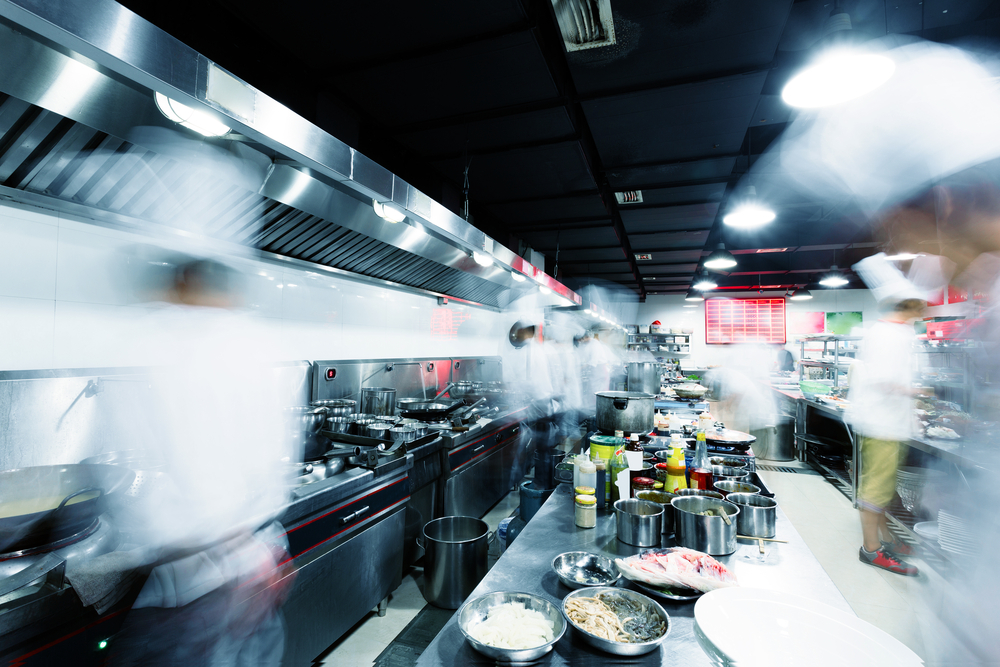This article is part of a series called “Getting Off-Premises”, which examines how to build an off-premises business.
When you launch your catering program, you can’t just take over some hidden kitchen corner of your restaurant. A restaurant space doesn’t magically transform into a catering operation. Imagine your staff handling catering willy-nilly, taking their spots to julienne carrots whenever they please. Or your prep cooks pulling ingredients for catering orders from the restaurant walk-in without any form of tracking. What chaos could result? The success of your business begs for a plan. It’s not especially difficult to reconfigure your restaurant facilities or systems to accommodate your catering business. I’ll show you steps to make those adjustments easier.
Since catering will compete for space, labor, and equipment, you must decide the following:
- Where in your restaurant you’ll prepare catering orders
- When during the day you’ll produce catering orders
- How much food should be on hand for each day
- What equipment you’ll need to purchase for catering
We’ll go through each of these points together.
If you’ve been following my article series (read more), you’ll recall that last week I introduced principles for building a solid foundation for your catering business. This is Part 2 of the two-part article. As you might have guessed, we’ll now look at Facilities and Logistics.
1. Where Will You Prepare Catering Orders?
It’s not ideal to assemble catering orders in the space intended for restaurant orders. Give your catering operation its own space to avoid interfering with the production of restaurant orders. If you lack extra space, smart scheduling can somewhat alleviate the struggle. (More on that below.)
2. When Will You Produce Catering Orders?
Scheduling: Schedule staff to begin staging known orders the day before orders are due, and have them assemble and finish orders the day they’re needed. For example, after the lunch rush ends, devote resources to organizing the packaging and to preparing the ingredients for the next day’s catering orders. The next morning, catering personnel will be the first to arrive to finish order assembly.
Staffing: Your restaurant and its catering program are separate businesses which need their own staff during peak periods. Don’t divert line cooks to catering roles—or vice versa—during lunch hours and shortchange either business. Outside of peak hours, however, cross-utilize every position to help both businesses.
Workspace: Space in most restaurants is limited, so bring your catering crew in before your lunch cooks arrive. This allows your catering team to get organized without disrupting or interfering with restaurant prep.
3. Managing Food Inventory and Production
For both your catering and restaurant operations, set daily “par levels” to track food inventory and usage. This safeguard will ensure that neither runs out of inventory or is stuck with sitting inventory. Separate the inventory of each side of your business. For example, it’s not a good idea to deplete the restaurant’s bagel supply simply because two dozen were just ordered for a catering order. Once you’ve established practical par levels for production and inventory, build into them a modest cushion that won’t exceed your freshness parameters. Running out of food might be inevitable, but you should ensure it rarely happens.
4. Purchasing Catering Equipment
Figure out what equipment you need to start catering. Without the right tools for the job, productivity will suffer. Don’t ask your team to row a boat with rakes. Give your gang the oars they require.
The level of service you offer to catering customers (pick-up, drop-off, delivery, onsite service, etc.) determines your equipment needs. If you’re delivering hot foods, you’ll need hot bags. High-quality coolers are needed for frozen desserts; chafing dishes and proper utensils for onsite service, etc. Your catering menu will determine what equipment you’ll need. So will type of experience you intend to provide.
Catering businesses usually need the following tools:
- A make-table for production
- Extra smallwares (mixing bowls, ladles, tongs, scales, etc.)
- A wheeled cart is ideal for order delivery
- A wide range of food and drink packages, and disposable utensils
This list could be long, so devote a lot of thought to it.
Also, any equipment you use off-premises should be consistent with your brand’s style. If you’re in the fine-dining space, your chafing dishes should be stainless or silver and have utensils to match. If you’re in fast-casual, disposable chafing dishes are acceptable. Image is important in managing people’s perceptions of your business.
A solid foundation for your catering business is essential to long-term growth and profitability. Be smart and plan yours thoroughly.
Forget hard lessons. Learn how to build a successful catering business the easy way.








